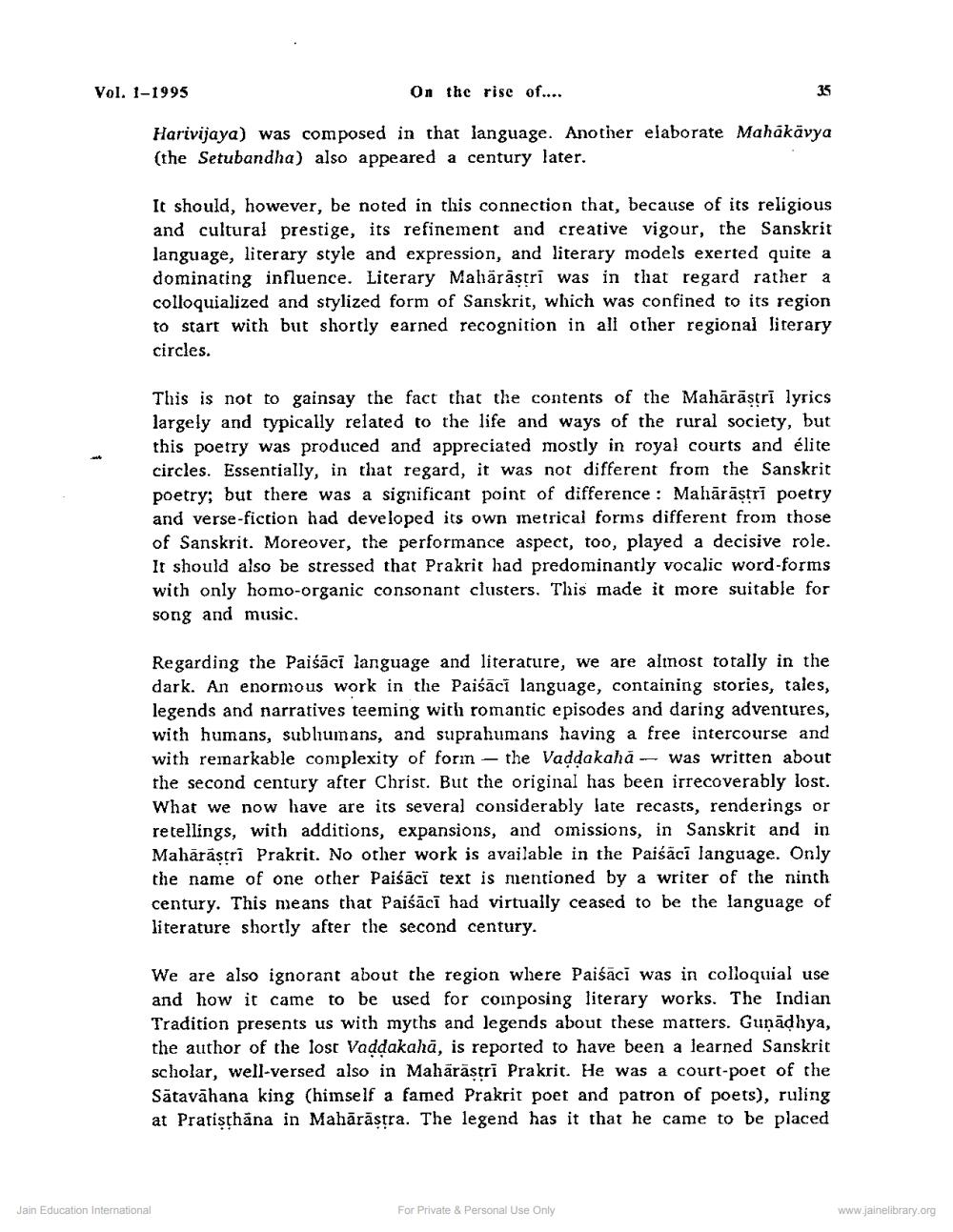________________
Vol. 1-1995
On the rise of....
Harivijaya) was composed in that language. Another elaborate Mahakāvya (the Setubandha) also appeared a century later.
It should, however, be noted in this connection that, because of its religious and cultural prestige, its refinement and creative vigour, the Sanskrit language, literary style and expression, and literary models exerted quite a dominating influence. Literary Mahārāstri was in that regard rather a colloquialized and stylized form of Sanskrit, which was confined to its region to start with but shortly earned recognition in all other regional literary circles.
This is not to gainsay the fact that the contents of the Mahārāştri lyrics largely and typically related to the life and ways of the rural society, but this poetry was produced and appreciated mostly in royal courts and élite circles. Essentially, in that regard, it was not different from the Sanskrit poetry; but there was a significant point of difference: Mahārāstri poetry and verse-fiction had developed its own metrical forms different from those of Sanskrit. Moreover, the performance aspect, too, played a decisive role. It should also be stressed that Prakrit had predominantly vocalic word-forms with only homo-organic consonant clusters. This made it more suitable for song and music.
Regarding the Paiśāci language and literature, we are almost totally in the dark. An enormous work in the Paiśācī language, containing stories, tales, legends and narratives teeming with romantic episodes and daring adventures, with humans, subliumans, and suprahumans having a free intercourse and with remarkable complexity of forin – the Vaddakahá - was written about the second century after Christ. But the original has been irrecoverably lost. What we now have are its several considerably late recasts, renderings or retellings, with additions, expansions, and omissions, in Sanskrit and in Mahārastri Prakrit. No other work is available in the Paiśāci language. Only the name of one other Paiśāci text is mentioned by a writer of the ninth century. This means that Pajśācī had virtually ceased to be the language of literature shortly after the second century.
We are also ignorant about the region where Paiśāci was in colloquial use and how it came to be used for coinposing literary works. The Indian Tradition presents us with myths and legends about these matters. Gunādhya, the author of the lost Vaddakahā, is reported to have been a learned Sanskrit scholar, well-versed also in Mahārāstrī Prakrit. He was a court-poet of the Sātavāhana king (himself a famed Prakrit poet and patron of poets), ruling at Pratişthána in Mahārästra. The legend has it that he came to be placed
Jain Education International
For Private & Personal Use Only
www.jainelibrary.org




